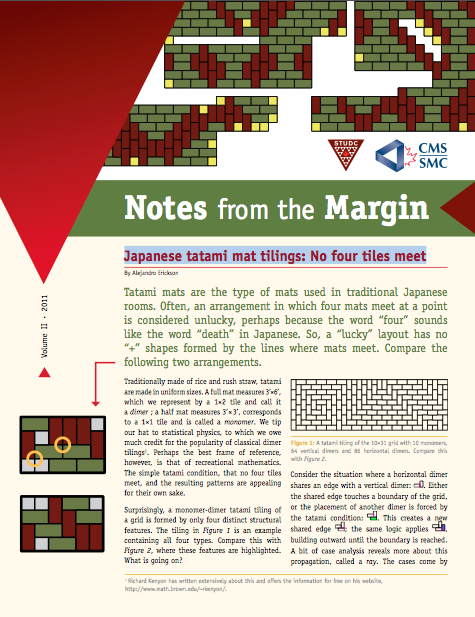Tatami in the Margin - Canadian Mathematical Society
I am pleased to announce the publication Japanese tatami mat tilings: No four tiles meet, in the Notes from the Margin, Volume II, 2011, from the Student Committee of the Canadian Mathematical Society.
The title of the newsletter comes from the story behind Fermat's last theorem. He had written in the margins of his notebook:
it is impossible to separate a cube into two cubes, or a fourth power into two fourth powers, or in general, any power higher than the second, into two like powers. I have discovered a truly marvelous proof of this, which this margin is too narrow to contain. (wikipedia)
This article is a condensed version of a result in the conference proceedings: A. Erickson, M. Schurch, 2011: Enumerating tatami mat arrangements of square grids, in 22nd International Workshop on Combinatorial Algorithms, University of Victoria, June 20-22, volume 7056 of Lecture Notes in Computer Science (LNCS), Springer Berlin / Heidelberg, 2011, p. 12 pages.
Abstract:
Tatami mats are the type of mats used in traditional Japanese rooms. Often, an arrangement in which four mats meet at a point is considered unlucky, perhaps because the word “four” sounds like the word “death” in Japanese. So, a “lucky” layout has no “+” shapes formed by the lines where mats meet. Compare the following two arrangements.
Tatami tilings are accessible and fun, so go ahead and take a gander!
